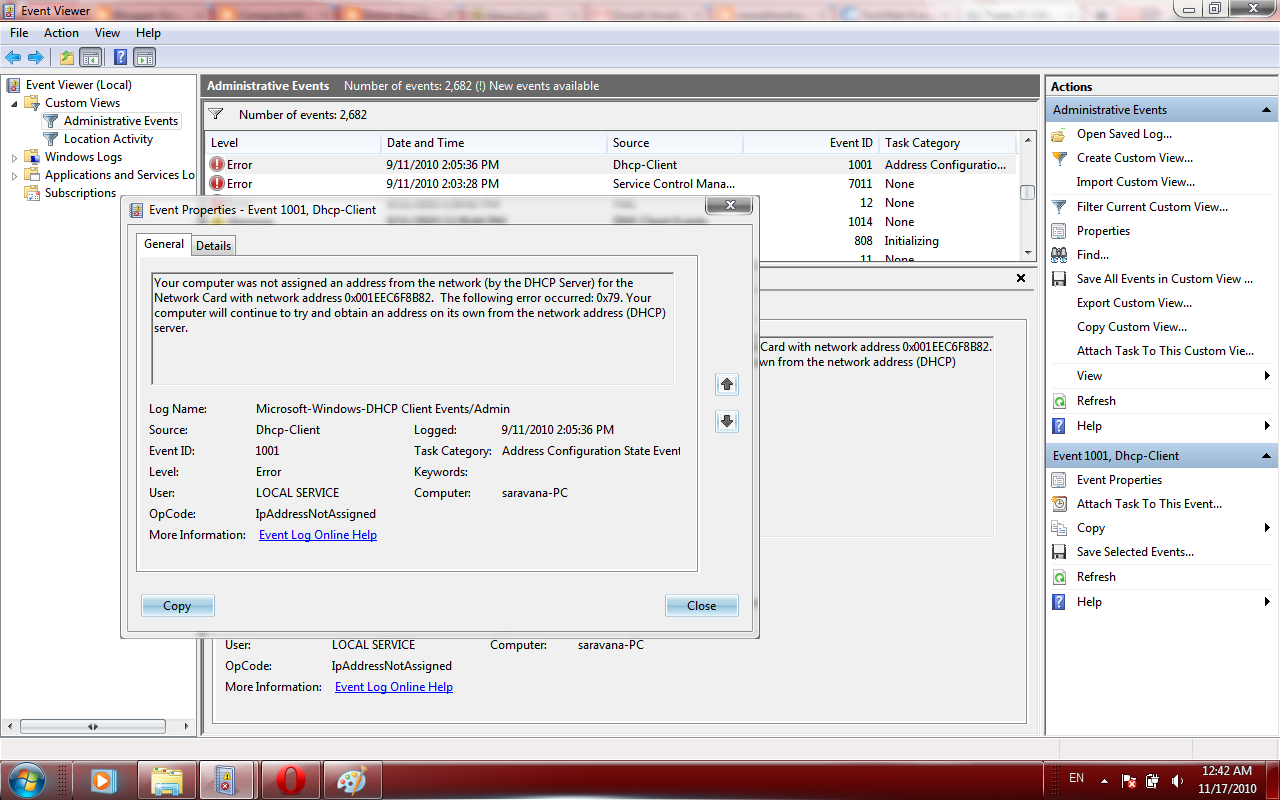- Windows Event Id 1001 Bugcheck
- Windows Update Event Id 1001 Windows 10
- Event Id 1001 Windows Update Failure 3
Event 2: Log Name: System Source: Microsoft-Windows-WAS Event ID: 5117 Description includes: WsusPool Solution. If you are encountering Event ID 1309 in the Application log at around the same time as event ID 5117 in the System log, you most likely need to increase the memory allocated to the WSUS Application Pool in IIS. Hi, i am running a windows server 2k3 with sp2 and server is getting rebooted with event id 1001:The computer has rebooted from a bugcheck.
Applies to
- Windows 10
Note

This is a 300 level topic (moderately advanced).
See Resolve Windows 10 upgrade errors for a full list of topics in this article.
When Windows Setup fails, the result and extend code are recorded as an informational event in the Application log by Windows Error Reporting as event 1001. The event name is WinSetupDiag02. You can use Event Viewer to review this event, or you can use Windows PowerShell.

To use Windows PowerShell, type the following commands from an elevated Windows PowerShell prompt:
Important
Windows Event Id 1001 Bugcheck
}The following source will be available only if you have updated from a previous version of Windows 10 to a new version. If you installed the current version and have not updated, the source named WinSetupDiag02 will be unavailable.
Windows Update Event Id 1001 Windows 10
To use Event Viewer:
Event Id 1001 Windows Update Failure 3
- Open Event Viewer and navigate to Windows LogsApplication.
- Click Find, and then search for winsetupdiag02.
- Double-click the event that is highlighted.
Note: For legacy operating systems, the Event Name was WinSetupDiag01.

Ten parameters are listed in the event:
| Parameters |
|---|
| P1: The Setup Scenario (1=Media,5=WindowsUpdate,7=Media Creation Tool) |
| P2: Setup Mode (x=default,1=Downlevel,5=Rollback) |
| P3: New OS Architecture (x=default,0=X86,9=AMD64) |
| P4: Install Result (x=default,0=Success,1=Failure,2=Cancel,3=Blocked) |
| P5: Result Error Code (Ex: 0xc1900101) |
| P6: Extend Error Code (Ex: 0x20017) |
| P7: Source OS build (Ex: 9600) |
| P8: Source OS branch (not typically available) |
| P9: New OS build (Ex: 16299} |
| P10: New OS branch (Ex: rs3_release} |
The event will also contain links to log files that can be used to perform a detailed diagnosis of the error. An example of this event from a successful upgrade is shown below.
Related topics
Windows 10 FAQ for IT professionals
Windows 10 Enterprise system requirements
Windows 10 Specifications
Windows 10 IT pro forums
Fix Windows Update errors by using the DISM or System Update Readiness tool